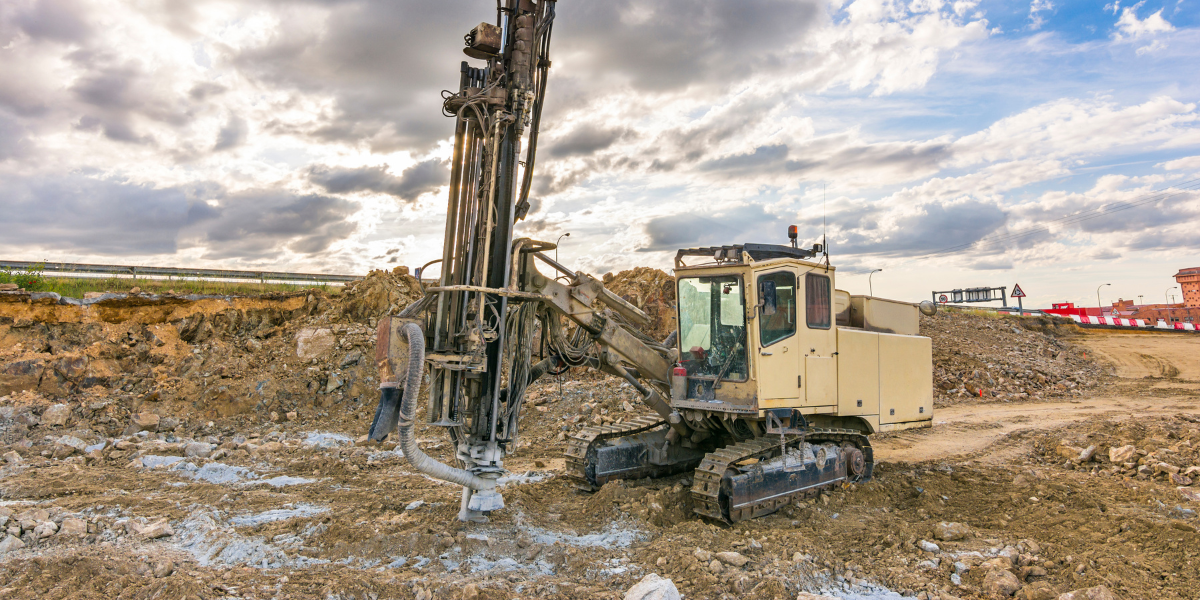Comprehensive Geotechnical Works to Make Certain Site Security
Comprehensive Geotechnical Works to Make Certain Site Security
Blog Article
Exactly How Consulting Engineers Enhance Geotechnical Design Projects: Insights Into Their Competence, Approaches, and Collaborative Approaches
Consulting engineers are critical in boosting geotechnical design tasks, using their specialized knowledge to navigate the intricacies of subsurface conditions. Their techniques encompass a series of site investigation strategies, consisting of Standard Penetration Examinations (SPT) and Cone Penetration Examinations (CPT), which inform critical choices throughout the layout and building phases. Their joint techniques foster interaction amongst varied project stakeholders, eventually forming the task's trajectory. As we take a look at the complex functions these professionals play, it comes to be clear that their contributions expand beyond technical know-how, prompting a better look at the ramifications for task success.
Role of Consulting Engineers
The know-how of speaking with designers in geotechnical design is basic to the successful implementation of building and construction projects. These experts play an essential duty in assessing dirt and rock properties, which are vital aspects affecting layout and building and construction decisions. By performing comprehensive site investigations, seeking advice from designers accumulate crucial data that notifies the style process, guaranteeing projects are improved steady and ideal ground.
Consulting engineers additionally offer very useful understandings right into threat monitoring (geotechnical geologist). They recognize possible geotechnical threats, such as landslides, dirt liquefaction, and settlement problems, enabling stakeholders to implement effective reduction methods. Their expertise help in maximizing structure layouts, which can bring about substantial expense savings and boosted safety and security
Additionally, seeking advice from engineers act as a vital web link between task proprietors, architects, and service providers. Their ability to translate complex geotechnical data right into workable suggestions fosters cooperation and promotes notified decision-making throughout the project lifecycle. This multidisciplinary technique not only boosts job efficiency yet also ensures conformity with regulative standards and ideal methods.
Key Techniques in Geotechnical Engineering

One primary technique is website examination, which involves conducting field tests and lab analyses to collect information on subsurface problems. Strategies such as Standard Penetration Testing (SPT) and Cone Infiltration Testing (CPT) are commonly utilized to assess dirt stratigraphy and strength. Furthermore, geophysical techniques, consisting of seismic and electric resistivity studies, provide non-invasive means to evaluate subsurface qualities.
One more vital technique is mathematical modeling, which allows designers to replicate different circumstances and predict exactly how soil-structure interactions will behave under various loading problems. Finite Aspect Analysis (FEA) is a common approach employed in this context.
Moreover, the layout of structures, maintaining frameworks, and earthworks counts greatly on these methods - geotechnical geologist. By integrating sophisticated analytical devices with area information, consulting designers can establish tailored solutions that resolve certain job challenges, ultimately adding to the security and safety of construction tasks
Value of Soil Evaluation
Dirt analysis works as a foundational aspect in geotechnical engineering, giving necessary insights right find more info into the physical and chemical residential properties of soil needed for reliable building planning. Comprehending dirt qualities is critical for determining its load-bearing ability, drain actions, and capacity for negotiation or instability. Detailed soil examinations, consisting of sampling and lab testing, assistance determine criteria such as soil type, wetness web content, thickness, and shear strength.
These evaluations inform the option of appropriate building methods and products, ultimately influencing job security and long life. Natural soils may require different foundation layouts compared to granular soils, necessitating tailored engineering services. Furthermore, soil evaluation aids in determining pollutants that might present dangers to human wellness or the setting, enabling the growth of reduction strategies.
Including dirt analysis into the onset of project advancement helps to minimize unforeseen challenges, making certain that designers can expect and attend to potential problems prior to they rise. By developing a detailed understanding of the site problems, speaking with engineers can enhance design efficiency and lower expenses, consequently improving the overall success of geotechnical design jobs.
Collaborative Strategies in Jobs
Successful geotechnical projects often depend upon collective methods that unite varied proficiency from different self-controls. Effective cooperation among speaking with designers, geologists, ecological researchers, and construction specialists is important for dealing with intricate challenges and maximizing job outcomes. By leveraging the one-of-a-kind skills and expertise of each staff member, jobs can take advantage of a holistic understanding of the site problems, regulatory needs, and design constraints.
Normal communication and interdisciplinary meetings assist in the sharing of insights and promote a society of team effort. These joint efforts enable the recognition of potential risks early in the job lifecycle, our website enabling timely mitigation methods. Incorporating comments from stakeholders, including regional communities and regulatory firms, makes sure that all point of views are taken into consideration, boosting task acceptance and compliance.
In addition, the combination of advanced modern technologies, such as Geographic Details Equipment (GIS) and Structure Details Modeling (BIM), more boosts cooperation. These devices permit the real-time sharing of information and visualization of geotechnical problems, advertising educated decision-making. Inevitably, a joint strategy not just improves job execution but also lays the structure for cutting-edge remedies to intricate geotechnical engineering difficulties.
Effect On Job Outcomes

Consulting designers use advanced techniques such as threat assessment and anticipating modeling, which boost the accuracy of job projections. Their ability to incorporate cutting-edge innovations, like geotechnical instrumentation and information analytics, further fine-tunes the style and building processes. As an outcome, projects experience boosted effectiveness, reduced expenses, and decreased delays.
Additionally, cultivating effective interaction and cooperation view it among team members boosts analytic capabilities. When challenges develop, a united front permits swift identification of options, preventing potential troubles. Inevitably, the joint initiatives of seeking advice from designers add to better outcomes, guaranteeing that jobs fulfill both governing criteria and customer assumptions.
Verdict

Report this page